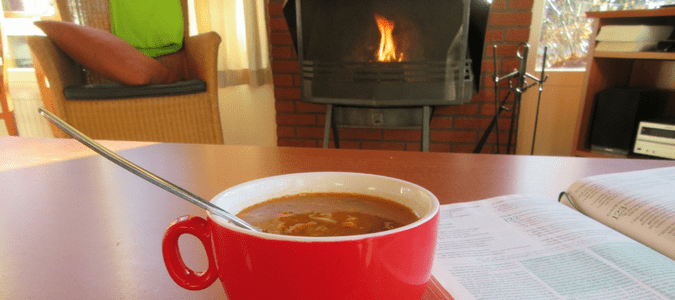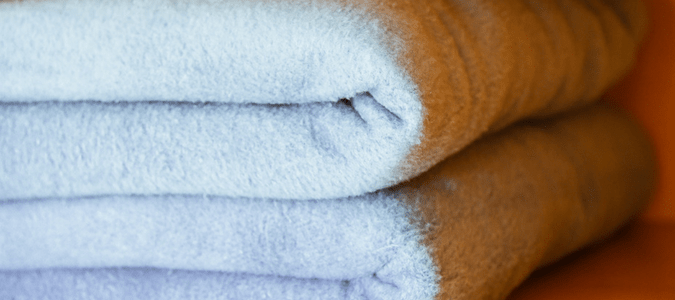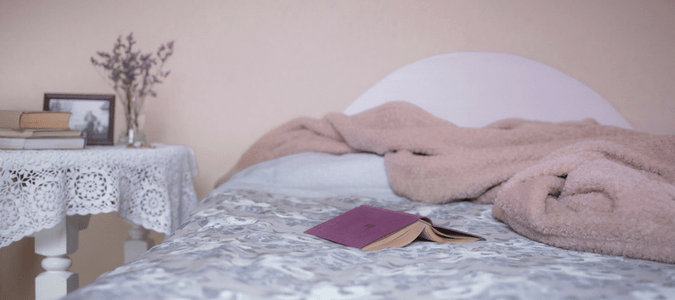
Cooler temperatures mean warmer clothes, chilly nights and maybe even a fire in the fireplace. When the temperature finally drops to the point where we can turn on our heaters, remembering the most energy-efficient thermostat setting can be as perplexing as remembering why you walked into the room.
In this post, we’ll discuss the best temperature to set your thermostat in winter, find out what the experts have to say about it, learn what impacts average house temperatures in winter, talk about programming your thermostat, discuss whether smart thermostats are worth the investment and suggest other ways to reduce energy costs.
What’s the Best Temperature to Set the Thermostat in Winter?
We all just want to be comfortable in our home. Fighting over the thermostat can be an area of contention in a family. Many homeowners seek to balance comfort with affordable heating and cooling bills.
According to the U.S. Department of Energy, homeowners can save as much as 10 percent on heating and cooling bills over the course of a year just by adjusting your thermostat back 7° to 10° for 8 hours a day.
Generally, we recommend that you set your thermostat between 68° to 72° in the winter months during the day if someone is home. At night, or when you aren’t home, we recommend keeping your house between 62° and 66°.
However, as we acclimate to colder temperatures after our blistering Southern summers, that temperature range may seem intolerable. So, we recommend trying to lower your thermostat by one degree every few days until you can adjust comfortably.
Experts Weigh In: Best Temperature for Heater In Winter
Want more advice from the experts? Texas is Hot, an educational coalition dedicated to promoting conservation, recommends that you set your thermostat at 68° during the winter to cut down on bills and be the most energy efficient. If you still feel chilly inside, the pros recommend keeping all your curtains and shades open during the day to let in the warm sunshine.
The Department of Energy also recommends keeping your home at the same temperature. Their literature suggests setting the temperature to 68° when you are at home and awake and setting it lower while you’re gone or asleep. Since heating and cooling represent the largest percentage of your utility bill, small adjustments over time can make an impact on your spending.
The Home Energy Saver community is a resource to learn more about how to save energy at home. Among the suggestions are conducting an energy audit, which can be done any time of year, to make changes which will help keep your home at a comfortable temperature both in the cooler and warmer times of the year. Although you can conduct your own DIY audit, home energy assessments are better left to the pros who can more easily spot common issues and recommend a course of action. Although some improvements may be costly, others are more affordable, especially when you factor in savings on your monthly bills over time.
TXU Energy also recommends 68° and reports that the average American spends $900 on heating costs annually. Performing routine maintenance can help cut down on these costs, as well as spotting potential problems so that they can be addressed before they turn into costly repairs. Industry veterans can advise you on whether insulating your garage or water heater can make a difference or whether weatherization would make sense for your home.

Factors That Impact Average Home Temperature In Winter
Why might you be having trouble keeping your home the temperature you’d prefer during the colder months of the year? An underlying problem might be keeping your home from being nice and cozy. There are three main reasons that your average home temperature isn’t consistent.
Leaky Ductwork
Ducts provide a pathway to distribute warm air across your home during the winter months. If your ducts aren’t properly sealed or insulated, they may be leaking air into unheated spaces, which could add hundreds of extra dollars to your utility bills each year. Easy upgrades can seal these ducts. An AC specialist can also check for any blockages which might be impacting your airflow or recommend enhancements that could improve how warm air circulates through your living spaces.
Blocked Drain Line
Sediment, algae and mold growth in your drain line can cause your furnace to underperform and eventually to shut down completely. If you notice standing water in your AC unit’s condensate pan, your drain line is probably clogged. If your drain hose looks dirty, flush out your drain line by removing the hose, filling it with a mixture of water and 25% bleach, waiting several minutes and then running water through the pipe. Better yet, enlist the help of a professional to get this repair done quickly.
Dirty Filter
Over time, dust and dirt can accumulate on your air filter, making your furnace less efficient and shortening its life. When a filter gets too clogged, it can shut your furnace off too quickly, which results in your home not warming up. If you can’t clearly see through your filters, you should replace them. If you have pets or allergies, you may need to change the schedule of how often you change your filters to help your system operate a peak efficiency.

Thermostat Tips For Winter Home Temperature Programming
One of the easiest ways for homeowners to become more energy efficient is to change how you program your thermostat. However, in practice, depending on which model you get, thermostats can be confusing to program, which explains why homeowners don’t often use them in the programming mode. Sometimes the thermostat is inherited from a previous homeowner and the manual is long gone. In some cases, the program was set at one point, but now schedules have changed and you might not know how to reprogram it.
Many manufacturers offer the ability to download a manual from their site, so it may be worth it to do a little investigating to see if that is an option. Setting your thermostat to keep your home at 62° while you aren’t at home when it’s chilly out can lead to a lot of cost savings over time. If you regularly get home at 5:30pm, you can program your thermostat to increase the temperature about 30 minutes before your regular arrival.
Thermostat Settings
Auto is the best place to set and leave your thermostat for daily functioning. This setting allows the unit to run until it reaches the desired temperature and then shuts off.
Hold allows you to put your settings on hold if you’re unexpectedly home during the day. This setting allows you to then manually adjust your thermostat.
On is the least energy efficient, because the fan remains on even when the chosen temperature has been reached. You should only use this setting when something is burning in the kitchen, when you are painting or if you are cleaning with something that has noxious fumes.

Benefits of Smart Thermostats
The newest type of thermostat available is a smart thermostat. This type of system allows the user to control your home’s temperature settings from a mobile device. Although smart thermostats cost more up front, they are generally easier to use and improve efficiency over time.
The Nest is a thermostat that can learn your habits and that you can program automatically. Some estimates show a savings of up to 20 percent on heating and cooling costs by using these devices. Some of these smart thermostats can also be set using a computer or using a voice-controlled speaker like Amazon’s Echo or Google’s Home. The device also captures and allows you to look through your energy history if you so desire.
In the end, if you don’t want to take the time to learn how to program your current thermostat or if it needs to be replaced, you may want to consider a smart thermostat just for the sheer ease of use factor.

Optimal Thermostat Placement
One of the reasons that your home might not be the temperature you would prefer is if your thermostat readings are inaccurate. If your thermostat is adjacent to direct sunlight, drafts, doorways, skylights and windows, your air conditioner or heater will kick in at the wrong times, leaving you feeling too hot or cold.
The best placement for a thermostat is:
- in a centralized location to properly gauge your home’s average temperature.
- away from direct sunlight which can result in your heater turning off too soon during the colder months.
- far from a register since air blowing on your thermostat can skew your reading.
- clear of windows, doors and garages, which tend to be drafty and which can impact your heating system.
How To Save on Energy Bills This Winter
What are some easy ways homeowners can save on winter utility bills?
Focus your efforts
If you live in a bigger home, closing doors to rooms you don’t use will make it easier to heat and cool the areas you live in. Contrary to popular belief, closing your registers in one room does not make your air conditioner work more efficiently.
Perform routine maintenance
As we have already mentioned, a semi-annual furnace inspection and service will prolong the life of your system and save energy. Diagnostic tests can ensure the proper functioning of your heater and spot any potential problems early.
Fix air leaks around your windows and doors
If you feel air flowing around your windows or doors, you need to weatherproof. You may need to replace or add caulk or replace the weatherstripping around doors. These products can contract and expand with temperature changes and wear out over time.
Wear weather-appropriate clothes
If your son wears shorts in the winter but complains about it being cold inside, it might be a good time to introduce him to pants or a blanket. Put on that favorite sweater and don your cozy socks, especially since the cold doesn’t last long in these warmer parts of the country.
Keep in mind that for every degree you turn down your thermostat during the winter, you reduce your energy bill by one percent.
ABC Can Keep You From Being Left Out In the Cold
The changing of the seasons in the southern states is often a welcome break from our brutal summers. When cold weather hits, we don’t want to have to worry about problems with your heater. Rely on the professionals at ABC Home & Commercial Services to inspect your furnace before cold weather hits, to conduct routine maintenance and to make any needed repairs so that you can stay cozy inside even when temperatures drop.
